At LEA, we started a focus on stream connectivity in the Sebago Lake Watershed a few years ago with funding from the Natural Resource Conservation Service through Sebago Clean Waters. We’ve always been dedicated to the preservation of our waters, and now we’re working to reconnect fragmented waterways. LEA’s focus in this work is to protect water quality from the threats of washouts and flooding related to undersized and damaged culverts. Read about how LEA is working to reconnect streams and rivers, revitalize habitats, and make our community more resilient to climate change, with the added benefit of protecting one of the last strongholds for native species like brook trout and landlocked salmon
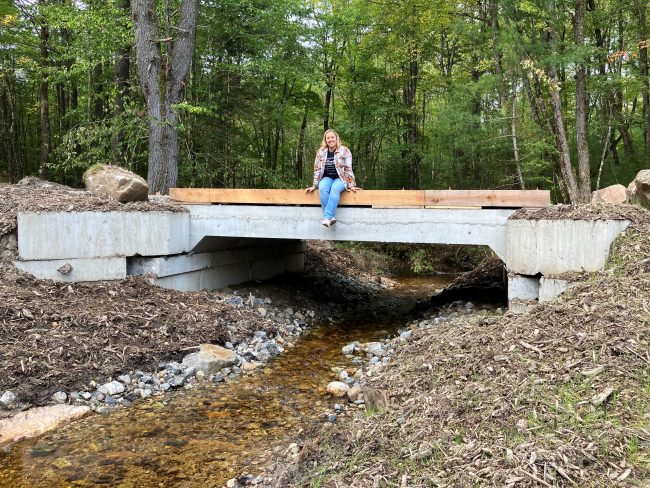
Burgess Brook Culvert Replacement
In a continued effort to protect and restore Sebago-region waterways, Lakes Environmental Association (LEA), in conjunction with partner organizations, successfully completed a culvert replacement project on Burgess Brook in Jugtown Forest in 2023. This endeavor marks a significant milestone in the restoration of critical fish passages in the greater Sebago Lake watershed.
In 2022, LEA and partners initiated the removal of an old stone dam that obstructed the natural flow of Burgess Brook, a vital tributary of the Crooked River. In 2023, the collaborative efforts focused on the replacement of an undersized and damaged culvert downstream, further enhancing fish passage and protecting against washouts. With severe weather events occurring more often, installing appropriately sized culverts will better protect against flooding and sediment entering waterways.
The team, guided by a stream restoration specialist and representatives from LEA, Sebago Clean Waters, Casco Bay Estuary Partnership, and Hancock Land Company, removed the culvert directly downstream from the dam… Read the full story here.
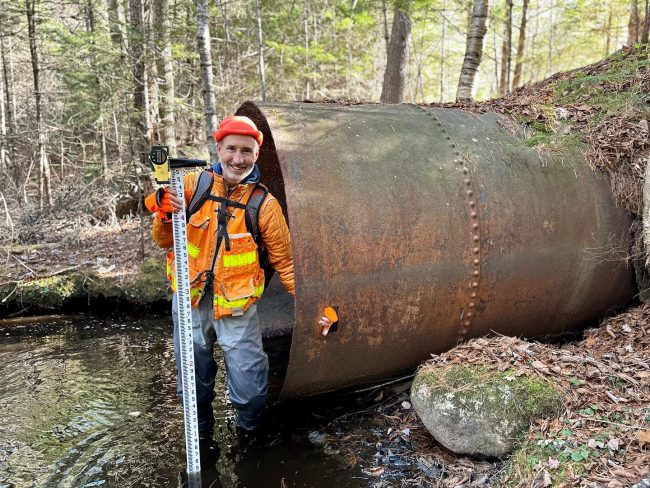
Stream Data Collection
We are collecting data, surveying, and monitoring streams around the watershed to inform a handful of upcoming culvert replacement projects. During a recent survey on Western Maine Foothills Land Trust property, we identified an undersized culvert suspected to be an old boiler pipe from a paper mill. Despite its size, this culvert posed challenges for fish passage, especially during low-water conditions. The data collected on this brisk November day will inform the design to replace the undersized culvert with an open-bottom bridge, (like the one on Burgess Brook).
In the fall of 2023, we retrieved HOBO sensors from Burgess Brook, where we had a successful stream restoration project this summer. These sensors, meant for monitoring environmental parameters like temperature and light, serve as critical tools in our ongoing efforts to make informed decisions about habitat restoration. The trends observed in Burgess Brook will be compared to data collected from the Crooked River just downstream by our friends at Trout Unlimited.
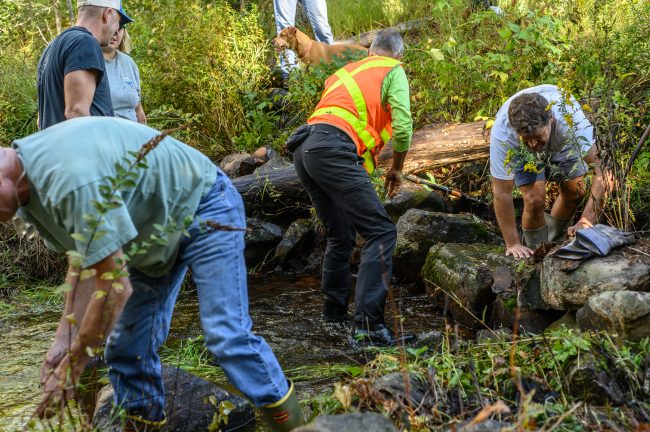
Burgess Brook Dam Removal
On September 14th, 2022, Lakes Environmental Association (LEA) and partner organizations removed remnants of an old stone dam in Burgess Brook that restricted fish passage. Burgess Brook is a tributary of the Crooked River, which has a wild population of brook trout and smelts, and provides nearly all of the spawning habitat for the landlocked salmon in Sebago Lake.
Our clean lakes, ponds, streams, and rivers are unique, making Western Maine one of the last strongholds for native brook trout and landlocked salmon. LEA and partners are working to expand this habitat, reconnect fragmented waterways, and install safer and more resilient stream crossings in collaboration with private landowners and municipalities… Read the full story here.
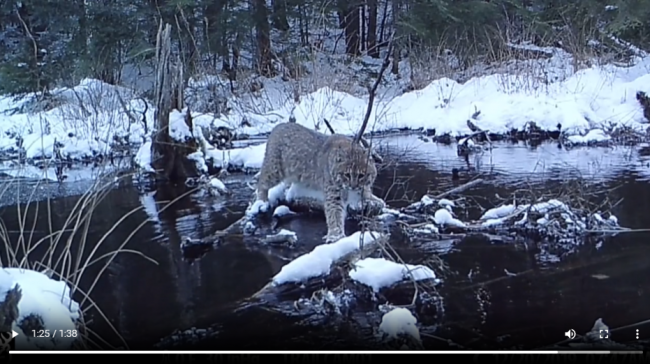
The Importance of Woody Debris in Streams
Streams and wetlands serve as vital wildlife corridors, allowing various aquatic and terrestrial species to travel in and along these resources. Natural crossings, such as the woody debris shown in the video, provide safe passage for wildlife to cross and explore new areas.
This collection of videos was captured at a natural stream crossing on one of our preserves. The crossing was created from a collection of sticks and woody debris, likely from beaver activity. Throughout the videos, we observe 16 different species traveling through one section of the stream. This video showcases the incredible species richness found… Read the full story here.
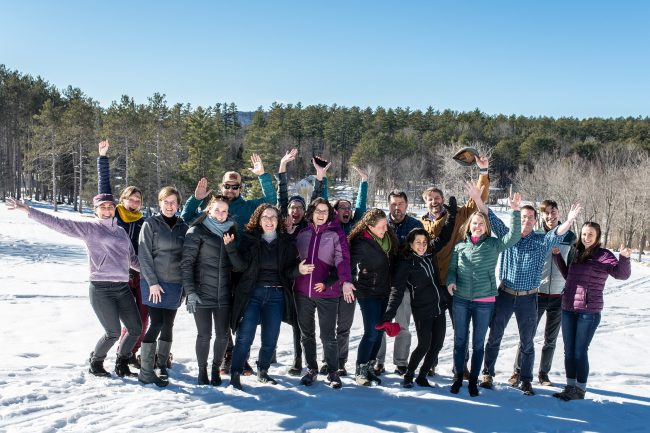
Sebago Clean Waters Awarded $8 Million USDA Grant to Protect Water Quality
Sebago Clean Waters (SCW) reached a significant milestone along its path to protect the Sebago Lake watershed this week when the coalition received an $8 million U.S. Department of Agriculture Natural Resources Conservation Service (NRCS) Regional Conservation Partnership Program (RCPP) grant. Portland Water District, as the lead partner for the grant, will manage the funds and work closely with other SCW partners. The five-year grant will support forest conservation, land stewardship, aquatic invasives control, stream connectivity, and landowner outreach in the Sebago Lake watershed. SCW partners will use the grant to leverage another $10.5 million from public and private sources needed to reach the initiative’s five-year goal of protecting 10,000 acres of high-priority forestland in the region and implement other watershed protection measures. Read the full story here.
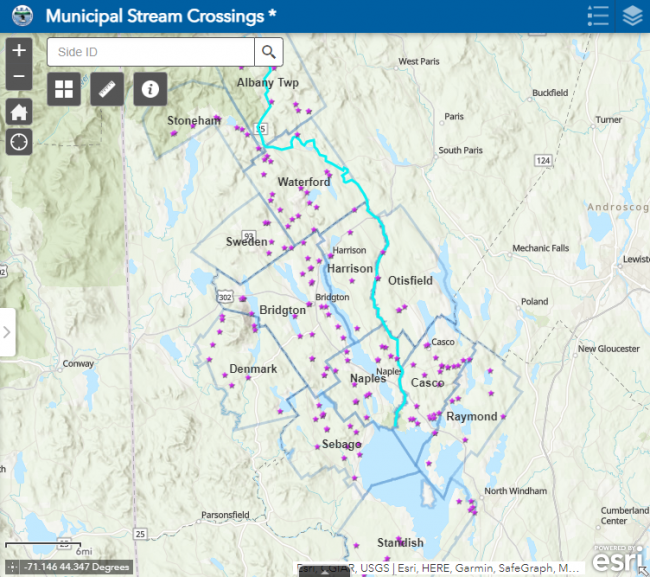
Municipal Stream Crossing Prioritization Map
Interactive map of town-owned stream crossings in the towns of Albany Township, Bridgton, Casco, Denmark, Harrison, Naples, Otisfield, Raymond, Sebago, Standish, Stoneham, Sweden, and Waterford. This was created as part of Lauren Pickford’s graduate project at Unity College.
Access the interactive map here.

Municipal Stream Crossing Prioritization Spreadsheet
This spreadsheet ranks the stream crossings based on a weighted scoring model of three criteria: flood risk (F), miles (M), and habitat importance (H). These parameters were extrapolated from publicly available data. More information on how to interpret these parameters can be found here. This spreadsheet was created as part of Lauren Pickford’s graduate project at Unity College.
Access the spreadsheet here.